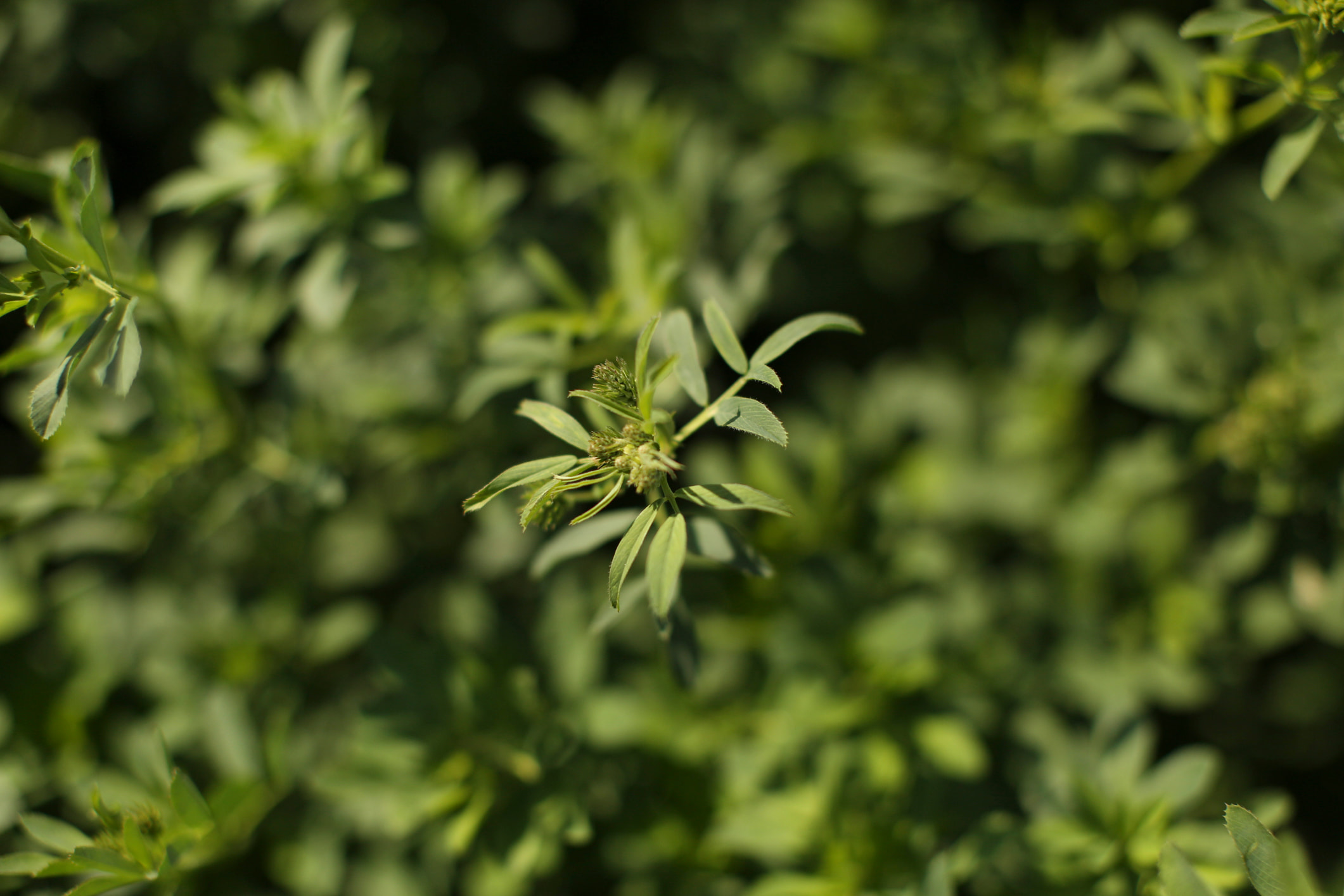New Seeding Alfalfa —Evaluate Herbicide Carryover

Corn, soybean and even wheat weed control chemistry has changed in the last few years to meet the challenges of herbicide resistant weeds. To meet the growing weed control challenges, new residual herbicide products (Group 4, 27 and 14) are popular for difficult to control weeds. Control of weeds like waterhemp has added complexity and carryover risk to herbicide programs. Herbicide resistance to common weed control programs (based on glyphosate) has required adding residual chemistry, new compounds and combinations to achieve acceptable weed control in grain crops.
However, a concern many alfalfa producers are experiencing is slow growing, thin, weak, or poor looking alfalfa stands following grain crops. These situations are not for lack of soil fertility, caused by soil diseases or other pests. Residual herbicide activity can attribute to poor looking alfalfa stands during establishment.
Review the chemistry you used last season.
Denial sometimes gets us in trouble. For alfalfa, it is unfortunate, but herbicides are designed to kill plants and the chemistry makes no distinction that alfalfa is a crop. Plan ahead and take into account the current crop weed control need as well as the following alfalfa seeding. Herbicide selections for corn, soybeans or a wheat crop prior to alfalfa is just as important as planning a lime application two years prior, or “no alfalfa following alfalfa for two years rule”, or logical planning of manure applications to manage soil phosphorous.
Read and follow the label.
Contained in the product label are the rotational restriction guidelines that include some footnotes, and fine print details that you may need to think about to keep the dog from biting. Rotational restrictions, for example, the number of months before planting alfalfa is allowed after application. There is a critical amount of time that is needed to allow the chemistry to decompose before seeding alfalfa.
Factors that may influence the herbicide residual time.
-
Late spring planting of crops on many farms in 2019 led to delayed herbicide applications. Some chemistry labels (listed in the label footnotes or fine print) indicate spraying after June 1st as example, this means alfalfa cannot be planted the following year.
-
Cool and dry weather conditions during spring 2020 (upper Midwest) may have delayed the decomposing timeframe of a chemistry.
-
Soil organic matter (OM) percent can have a significant influence on herbicide activity. Many herbicides have increased activity on soils with less than 2% OM. Some products would require that alfalfa must not be planted for 18 months following application on these medium-low OM soils.
-
Tillage method. Reduced-till, vertical-till, no-till scenarios all leave a significant amount of chemistry in a higher concentration near the soil surface where we grow alfalfa seedlings. “Dilution as a solution” tillage may reduce carryover stunting damage.
-
Areas in the field with overlaps, triangles, headlands often indicate carryover as double dosage and dead alfalfa is common.
-
False assumptions. Be aware that reducing rates on new chemistry may have minimal effect on carryover. Even in high rainfall regions, many of these compounds seem to have minimal influence from a “wet year” and can remain persistent a long time.
-
Soil compaction. Reduces water infiltration and alfalfa roots are confined in prolonged and higher concentration of herbicide residue. Slight deposition from rainfall washing more chemistry into the wheel tracks or slight depression areas can increase “spotty” carryover symptoms.
-
Additive influence of back to back residual chemistry applied annually for two-three years may compound the problem.
-
Finally, several active ingredients make up one premix product name. Review the active ingredient(s) in a pre-mix that can lead to potentially carryover is good to know.
Potential resulting effects of herbicide carryover on alfalfa establishment could include:
-
Poor stand establishment, weak stands, stunted slow growing alfalfa plants.
-
Uneven stands across the field making it difficult to manage.
-
Reduced yield potential and crop disappointment.
-
In some cases, alfalfa plants may be able to recover over time, but lost yield and income potential, purchased feed cost may be the reality.
-
Reseeding may or may not be a good/bad decision: 1) IF residual chemistry is not fully dissipated at reseeding time it may not work. 2) Late summer seeding in existing seedling can be a challenge as dry conditions often hinder reseeding.
-
Seeding Sorghum x Sudan into stunted damaged stands might be an option to recover some of the growing season.
Plan ahead.
Previous crop chemistry can “take a bite” out of new seeding alfalfa yields and hinder alfalfa establishment. Care should be taken to minimize stand loss risk by careful review of product labels with trusted advisors. Planning crop rotations and herbicide applications can lead to great alfalfa stands and new seeding yields.


